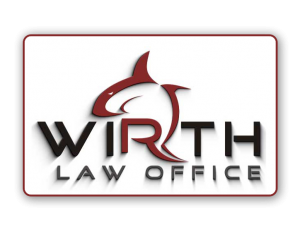The Companies Allegedly Deceptively Marketed Opioids in Oklahoma
Video Transcribed: $465 million opioid verdict overturned by the Oklahoma Supreme Court. I’m Tulsa lawyer James Wirth. We’re talking about a decision from the Oklahoma Supreme Court that just dropped moments ago related to the opioid crisis in the state of Oklahoma’s lawsuits to go after opioid manufacturers for the damages they caused through the marketing of those products. All right, so this goes back a little while where the state of Oklahoma 2017 filed suit against three different manufacturers of opioids that marketed those in the state of Oklahoma.
And it was Johnson & Johnson, Purdue, and Teva. And two of those companies ultimately ended up settling with Purdue offering to pay $270 million to the state of Oklahoma and Teva offering to pay $85 million. Those cases were then subsequently dismissed, but Johnson and Johnson did not settle. That case went forward actually to a bench trial. And the theory that the state of Oklahoma was pushing was that it was a public nuisance, the way that the companies were marketing these.
It says the alleged of the companies deceptively marketed opioids in Oklahoma that was creating a public nuisance through false misleading and dangerous marketing campaigns. And the state had an abatement plan for funding various types of services to help people get off opioids and whatnot.
And they wanted the pharmaceutical manufacturers to pay for that as an abatement of this public nuisance. However, nuisance law had never been used for anything like this. And I certainly had some concerns with the way that it was being used and I believe abused in a case like this, although obviously there are serious issues with the opioid crisis and issues with the way it may have been marketed and distributed in Oklahoma and throughout the country.
And Oklahoma was actually one of the first states to pursue this. Other states, I think followed suit. I believe some of the tribes in Oklahoma did as well, but this case ultimately went to trial and the judge, was a bench trial.
 The judge found it was a public nuisance. And ultimately granted the state’s request for abatement or the cost of what it would say the abatement would cost for one year, which amounted to $465 million. Johnson & Johnson appealed. This went to the Oklahoma Supreme Court and the Supreme Court has reversed it. And ultimately after the PLV, state of Oklahoma made a cross-claim in that appeal, requesting that the abatement is for 20 years or some $9.3 billion instead of just the $465 billion.
The judge found it was a public nuisance. And ultimately granted the state’s request for abatement or the cost of what it would say the abatement would cost for one year, which amounted to $465 million. Johnson & Johnson appealed. This went to the Oklahoma Supreme Court and the Supreme Court has reversed it. And ultimately after the PLV, state of Oklahoma made a cross-claim in that appeal, requesting that the abatement is for 20 years or some $9.3 billion instead of just the $465 billion.
But I want to note some of the quotes from the opinion of the Oklahoma Supreme Court reversing this. Basically says this court has not extended the public nuisance statute to manufacturing, marketing, and selling of products. And we reject the state’s invitation to expand Oklahoma’s public nuisance law. So it’s an acknowledgment that this has never been done before. That Oklahoma public nuisance law, it was not made for this, has never been utilized in this way.
And the court noted in making that decision also that the way the damages were determined in this case were not consistent with what you’d expect for a public nuisance. For a public nuisance divided among multiple different manufacturers, you would expect that the damages ordered by Johnson $ Johnson would be based on their percentage of market share or their percent that they’re contributing to opioids in Oklahoma. And because there’s a settlement in the two other lawsuits against other manufacturers, you would expect that amount to be offset by the amount they’re receiving from the other companies.
Neither of those things occurred, which was just information that the court put in here, which indicates that it was not really treating this as a public nuisance either by the way that damages were determined, although they were determining it based on abatement and the cost of abatement with this plan the state has to try to get into the opioid crisis in Oklahoma, but it did not distribute it prorata based on the sales by the different manufacturers and did not offset for the other settlements.
So finally, I want to go into kind of the conclusion the court came up with, it’s got a little bit more detail. It says this case challenges us to rethink traditional notions of liability and causation. Tort law is ever-changing. It reflects the complexity and vitality of daily life. The state presented us with a novel theory. Public nuisance liability for marketing and selling of a legal product based on the acts, not of one manufacturer, but an industry.
However, we are unconvinced that such actions amount to a public nuisance under Oklahoma law. The court has allowed public nuisance claim to address discreet, localized problems, not policy problems. Erasing the traditional limits on nuisance liability leaves Oklahoma’s nuisance statute impermissibly vague. The district court’s expansion of public nuisance law allows courts to manage public policy matters that should be dealt with by the legislature and executive branches.
The branches are more capable than courts to balance the competing interest at play in societal problems. Further, the district courts stepping into this choose of the legislature by creating and funding government programs designed to address social and health issues goes too far. The court defers policy-making to the legislative and executive branches and rejects the unprecedented expansion of public nuisance law. The district court erred in finding Johnson & Johnson’s conduct created a public nuisance. And the case is reversed. Essentially noting that public nuisance cannot be utilized in this way.
So this is a fatal decision in these claims. It’s not a reduction in the amount that is owed or in the way that that was calculated. It says it is improper to use public nuisance law at all in this way. So there’s no liability to Johnson & Johnson here based on this case. So that’s brand new coming out today. It is a published decision, so it will be available online. It’s 2021OK54. Because it is so new, it’s not yet available online on OCN, but it will be shortly. If you’ve got any questions about this case or other appellate cases, you’re going to want to talk to an attorney about that, privately, confidentially. To get that scheduled with somebody at my office, you go online and to makelaweasy.com.










